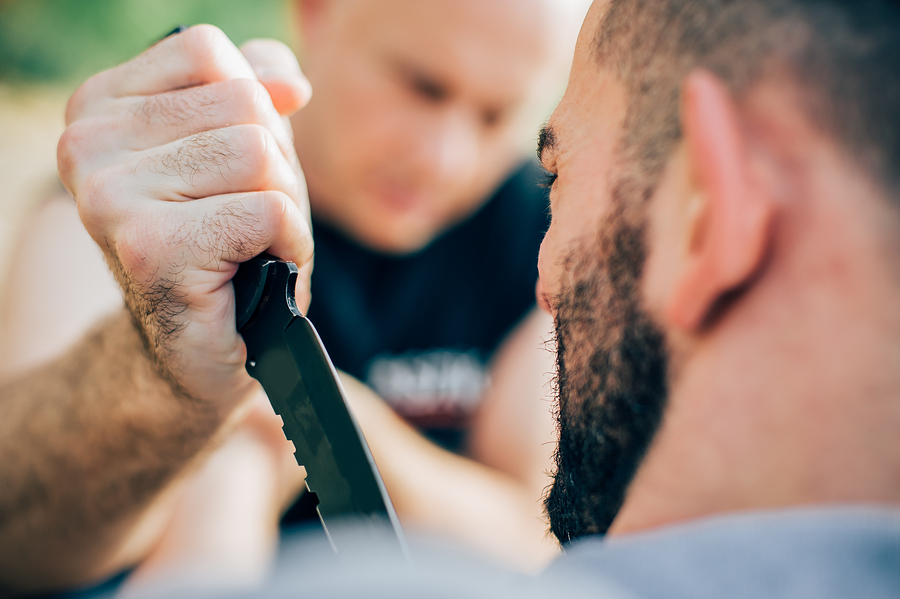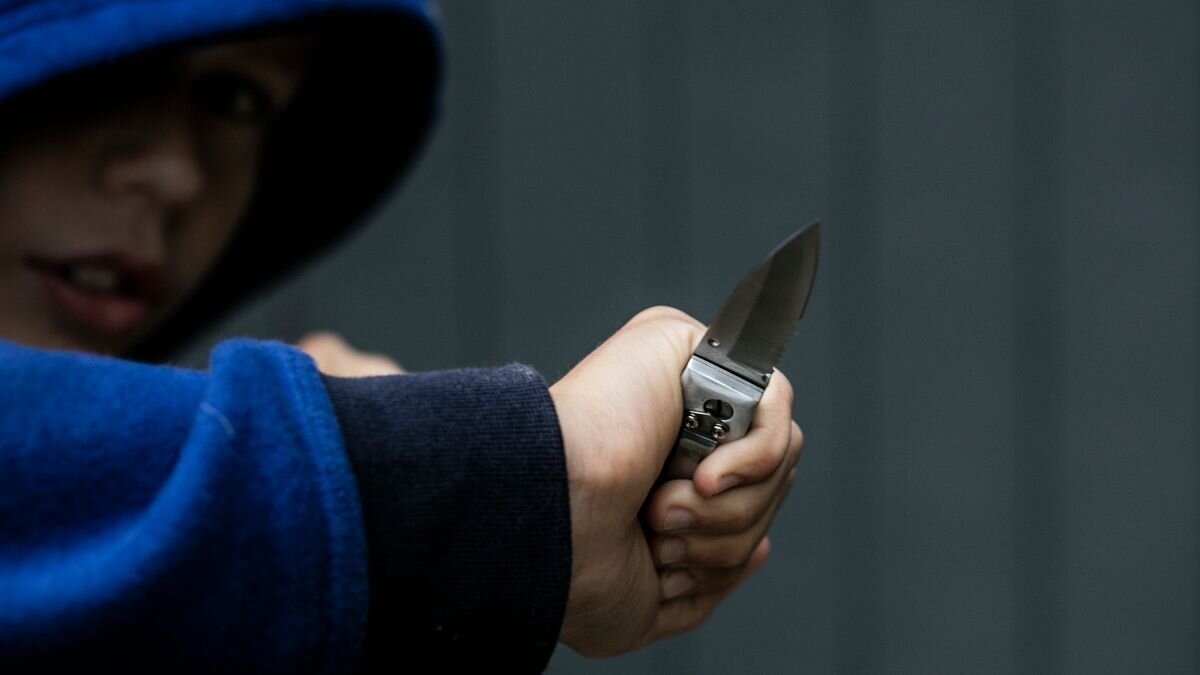I. Introduction
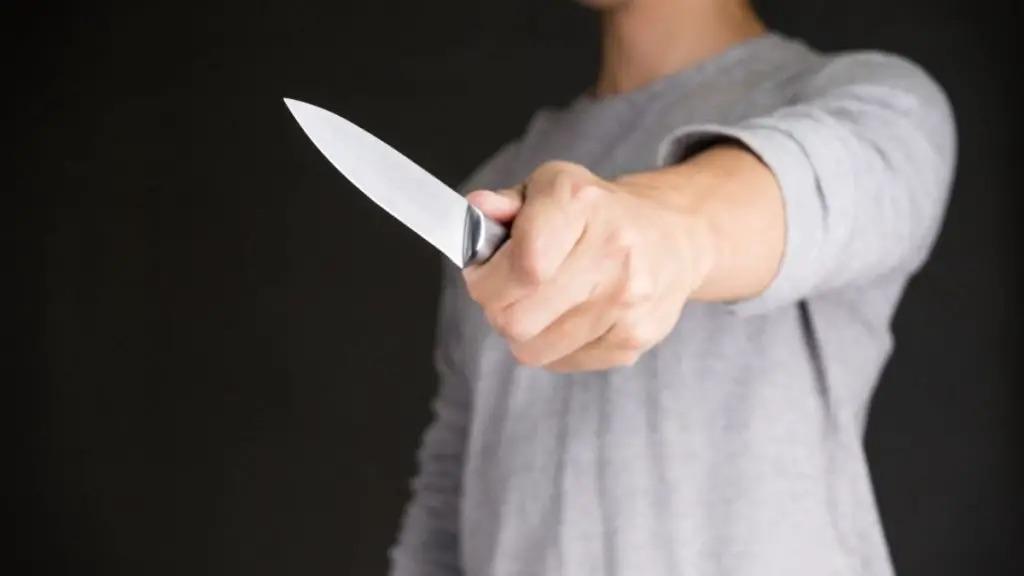
In today’s uncertain world, it is crucial for individuals to possess self-defense skills. These skills not only empower individuals to protect themselves and their loved ones but also provide a sense of security and confidence. While there are various self-defense techniques, one aspect that often gets overlooked is the importance of knife grip techniques.
II. Understanding the Basics of Knife Grips
A. Mastering a Firm Grip
Having a secure grip on a knife is vital for effective self-defense. A firm grip ensures that the knife remains firmly in your hand, enabling precise and controlled movements. There are some essential elements to consider when mastering a proper knife grip.
Firstly, your grip should allow for a secure hold on the knife handle without impeding your ability to move your fingers and wrist freely. This ensures optimal control over the knife’s movements.
Secondly, it is essential to position your hand correctly on the handle. Placing your hand too far forward can limit your reach and reduce your ability to generate power. On the other hand, positioning your hand too far back can compromise your control over the blade.
To improve grip strength and stability, individuals can engage in specific techniques. These can include exercises such as grip squeezes, finger curls, and forearm exercises. Additionally, regularly practicing knife handling can enhance your ability to maintain a firm grip under various scenarios.
B. Types of Knife Grips for Self-Defense
-
Forward Grip (Icepick Grip)
The forward grip, also known as the icepick grip, is one of the most commonly used knife grips in self-defense. It involves holding the knife with the blade pointing downwards, parallel to the arm.
The forward grip offers several advantages. Firstly, it allows for a natural and intuitive stabbing motion, leveraging the full force of the arm’s muscles. This grip also provides excellent control over the blade, making it easier to target specific areas on the attacker’s body.
However, the forward grip does have limitations. Its range of motion is primarily linear, making it less suitable for slashing or cutting motions. Additionally, this grip requires a certain level of physical strength to effectively overcome an assailant’s resistance.
Recommended scenarios for using the forward grip include close-quarters engagements where swift and forceful stabs are necessary for incapacitating an attacker. It is important to note that it should only be used in situations where there is an immediate and credible threat to your safety.
-
Reverse Grip
The reverse grip involves holding the knife with the blade pointing upwards, opposite to the arm. This grip can provide tactical advantages in specific self-defense scenarios.
One of the main benefits of the reverse grip is its versatility. It allows for a wider range of motion, enabling both slashing and stabbing actions. This flexibility can be advantageous when dealing with different attack angles or multiple assailants.
However, the reverse grip also has its drawbacks. It can be more challenging to maintain full control over the blade due to the position of the hand. This grip may also require more practice to become proficient in its use effectively.
Appropriate situations for employing the reverse grip include scenarios where quick slashing movements are required, such as when defending against a grab or an assault from a close distance.
III. Techniques for Holding a Knife in Self-Defense Situations
A. Forward Grip Techniques
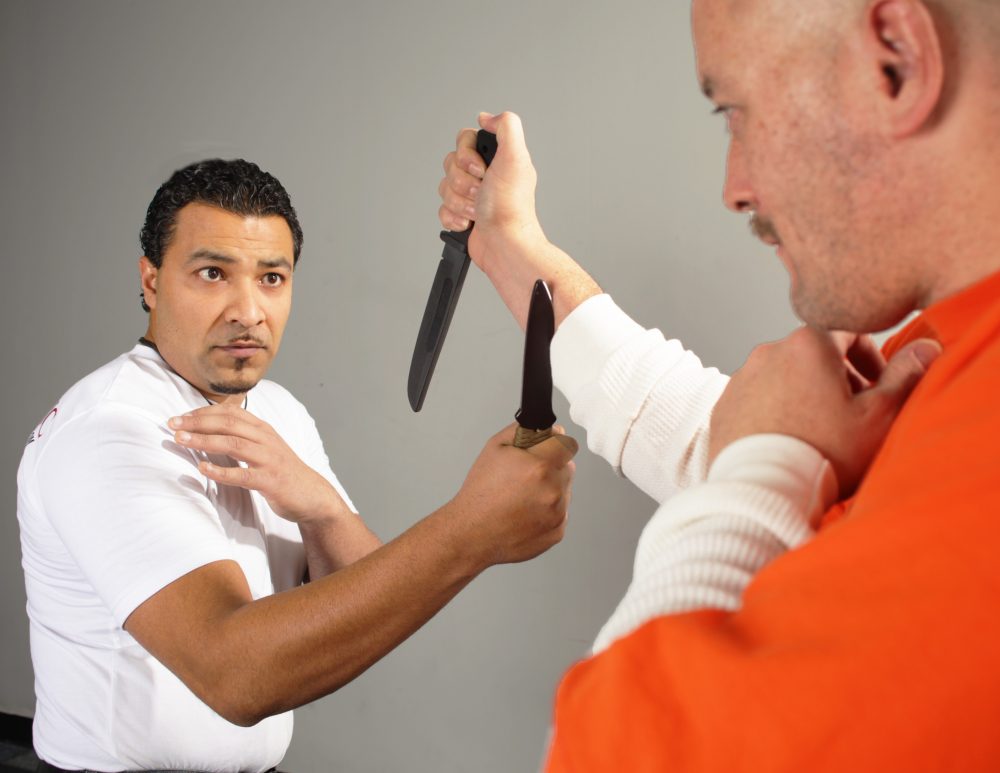
- Basic Strikes and Defensive Movements When utilizing the forward grip in a self-defense situation, it is essential to understand the basic strikes and defensive movements that can be executed effectively.
The straight stab technique is a fundamental strike in the forward grip. This technique involves thrusting the knife forward with the intent to penetrate an assailant’s body. Variations of the straight stab can include changing angles, targeting specific vulnerable areas, or utilizing follow-up strikes.
Incorporating hand positions and body movements can significantly enhance the effectiveness of the forward grip. For example, keeping the non-knife hand close to the body can provide balance and stability while striking. Additionally, engaging the hips and torso in the movement can generate more power in the strike.
- Defensive Maneuvers and Counterattacks In self-defense situations, it is crucial to not only have offensive capabilities but also defensive maneuvers and counterattacks to protect oneself. When utilizing the forward grip, several techniques can be employed.
Utilizing angles and footwork is an effective way to avoid attacks and create openings for counterattacks. Moving laterally or at an angle can help to evade an adversary’s strikes and position oneself in a more advantageous position.
Methods to deflect, parry, or disarm an opponent can be vital defensive tactics. Knowing how to redirect an assailant’s incoming strike with the knife hand or using the non-knife hand to block and control the opponent’s arm can create opportunities for counterattacks or disarming techniques.
B. Reverse Grip Techniques

- Slashing and Whipping Motions Unlike the forward grip, the reverse grip allows for slashing and whipping motions that can be effective in self-defense situations.
Executing slashing techniques while maintaining control over the knife is crucial in the reverse grip. Slashing motions should be quick and precise, targeting vulnerable areas such as the neck, limbs, or face. It is important to maintain control over the blade to prevent it from being easily grabbed or dislodged from the hand.
Incorporating body mechanics, such as using the hips and pivoting the foot, can generate maximum power and speed in slashing movements. By engaging the entire body, the reverse grip becomes a formidable tool for self-defense.
- Close-Quarter Defense Strategies The reverse grip can be particularly advantageous in close-quarter encounters. Techniques such as trapping and controlling the opponent’s weapon hand can give the defender an advantage.
Trapping an assailant’s weapon hand involves using the non-knife hand to immobilize or control their arm. This can be done by grabbing the wrist, forearm, or elbow, preventing them from effectively striking or defending themselves.
Joint manipulation and pressure point targeting are other effective strategies in close-quarter defense. By applying pressure to specific points or manipulating joints, the defender can incapacitate the attacker and create an opportunity to escape or neutralize the threat.
IV. Training Tips and Considerations
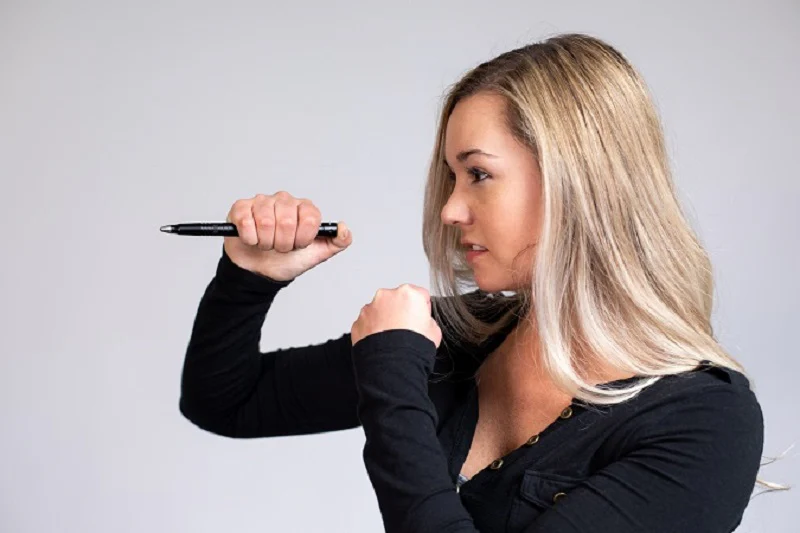
A. Safety Precautions
- Importance of responsible training and adherence to legal requirements When training with knives for self-defense purposes, it is crucial to prioritize safety. Adhering to local laws and regulations regarding knife ownership, carry, and use is essential.
- Protective gear and equipment recommendations Wearing appropriate protective gear, such as padded gloves and eye protection, can minimize the risk of accidental injury during training. Additionally, using training knives or dummy blades can reduce the chances of severe cuts or stabbings.
B. Effective Training Methods
- Seek professional guidance and instruction Learning self-defense techniques, particularly knife grips and tactics, should ideally be done under the guidance of a qualified self-defense instructor. They can provide expert knowledge, personalized feedback, and ensure proper technique execution.
- Regular practice and drills to develop muscle memory and reflexes Consistent practice is key to developing muscle memory and reflexes when it comes to self-defense with a knife. Regularly engaging in drills, such as striking targets, practicing defensive movements, and simulated self-defense scenarios, can help internalize the techniques and make them second nature in high-pressure situations.
By understanding and mastering the techniques for holding a knife in self-defense situations, individuals can take proactive steps towards increasing their personal safety. However, it is essential to remember that self-defense should always be a last resort and used responsibly and legally.
